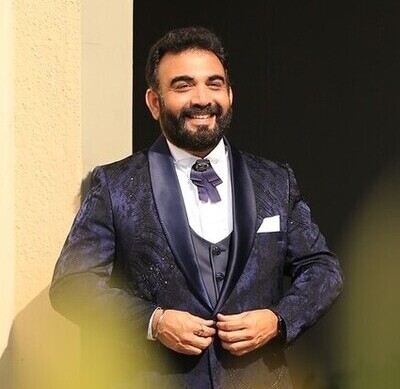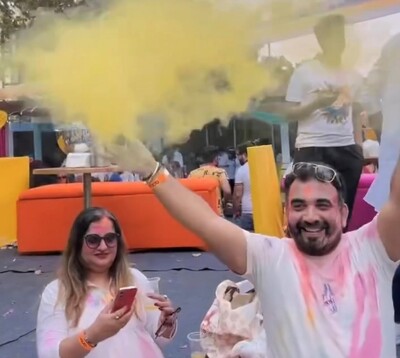kp and me: Lalit Mohan

Executive Director, kp India
I love working for kp. I’ve been here 14 years and it’s got into my blood. India’s a unique place to do business in, especially manufacturing. The local talent is huge, especially when it comes to innovating and developing new products. We’re very good at taking an existing product and making a better version of it.
That’s a challenge for any manufacturer as the moment you launch a product, someone will be working out how to do it better and for less money. It means we have to continuously introduce new products and find new niches to sell into.
It’s one of kp India’s biggest strengths that the moment a rival begins to sell something similar to our existing products, we start on something new. We have a huge range of products and that makes us able to compete in India’s endlessly dynamic market.
That’s a challenge for any manufacturer as the moment you launch a product, someone will be working out how to do it better and for less money. It means we have to continuously introduce new products and find new niches to sell into.
It’s one of kp India’s biggest strengths that the moment a rival begins to sell something similar to our existing products, we start on something new. We have a huge range of products and that makes us able to compete in India’s endlessly dynamic market.
That’s a big part of how we created the kp India business, which I joined when I was hired as Chief Financial Officer for a brand new, green-field factory build here in India. kp India had started in 2006, and the plan was to move to the next stage with this $30m project. India was (and still is) a huge market for pharmaceutical films, and kp wanted to be part of it.
I’d been working in Poland the plan was that I would come back to India for the job. It was a big move. But three months in, the project folded. The numbers weren’t adding up. The management in charge at that time wanted to cut their losses and close the business.
I had a meeting with the CEO and he wanted to know if there was a plan. I said we needed to recover the money we were owed and pay off our creditors or nothing else could be done. Then we needed to start again but take things slowly. It would cost more to close the business than to make it work, so we agreed to try to make it work.
I’d been working in Poland the plan was that I would come back to India for the job. It was a big move. But three months in, the project folded. The numbers weren’t adding up. The management in charge at that time wanted to cut their losses and close the business.
I had a meeting with the CEO and he wanted to know if there was a plan. I said we needed to recover the money we were owed and pay off our creditors or nothing else could be done. Then we needed to start again but take things slowly. It would cost more to close the business than to make it work, so we agreed to try to make it work.
Share this story
And we innovated. When PET started to replace PVC, we were the first people in India to use it.
At this point I could leave, or stay and help stabilise the business. So I stayed and we started to build kp India.
The first thing we did was to start direct sales in niche markets, using material from kp’s other factories. That allowed us to prove the concept and build a name for our products, which were of a much higher quality than many locally made options.
We built ourselves a customer base that guaranteed us a market. It was small to begin with, because our rivals were already established and could respond to our competition by cutting prices, which would have made life difficult. By establishing niches for ourselves, we owned those markets.
The first thing we did was to start direct sales in niche markets, using material from kp’s other factories. That allowed us to prove the concept and build a name for our products, which were of a much higher quality than many locally made options.
We built ourselves a customer base that guaranteed us a market. It was small to begin with, because our rivals were already established and could respond to our competition by cutting prices, which would have made life difficult. By establishing niches for ourselves, we owned those markets.

Lalit Mohan and his wife celebrating Holi festival
Today most of our business is pharmaceutical sales, and most of my job is sales-oriented rather than financial. I travel a lot, to see customers. India’s a huge country and the distances we cover are big – it takes a lot of time.
We had some visitors from Germany recently and I think they didn’t quite realise how long it would take to get places. We did a 1700km round trip to meet one customer. You have to put the time in though, because meeting customers gets the business.
It’s a different way of working. India is my home. I’ve travelled all over for work, from China to the US, and lived in the UK and Poland, but this is where I’m from. We have such a social culture here which I love. We visit friends and family a lot and we celebrate festivals all the time.
We’ve just had Holi, the festival of colours, which celebrates the defeat of the demon king Hiranyakashipu by Lord Vishnu. It’s a major Hindu festival, and it also marks the beginning of spring. Everybody paints their faces in bright colours and if you go outside, you’ll get covered in powered colour because everyone throws it at everyone else.

People carry water pistols and you’ll get soaked through, which makes the powered colour turn to paint. There’s lots of singing, dancing, drumming and food.
Food’s an important part of the festival, especially sweet pastries, fritters and drinks. Indians like to celebrate by eating and drinking and socialising: our festivals are noisy, friendly and fun. Diwali, in November, is even bigger. It celebrates the return of the prince Rama to his homeland after 14 years in exile, and his defeat of the demon Ravana. In the legend, the people of his kingdom lit oil lamps, called diyas, to mark his homecoming, which may be where the name Diwali comes from.
"I’ve no intention of leaving India again. The country is in my blood. It’s the same working for kp – the company gets inside you."
Lalit Mohan
Executive Director, kp India
 Today it’s a huge event: the scale of Diwali is like Christmas. Everyone gets three days off work, although the celebrations often go on for a week. People decorate their houses and temples with lights and flowers, and each day has a different set of traditions. On the second day everybody buys sweets, on the third people let off fireworks and firecrackers and the fifth is about marking the bond between brothers and sisters.
Today it’s a huge event: the scale of Diwali is like Christmas. Everyone gets three days off work, although the celebrations often go on for a week. People decorate their houses and temples with lights and flowers, and each day has a different set of traditions. On the second day everybody buys sweets, on the third people let off fireworks and firecrackers and the fifth is about marking the bond between brothers and sisters.Everything we do is like this. I went to an all-night meditation event in Chennai recently and 1.5 million people attended. Even the president came. It’s the unique nature of this country and our religion that makes this happen. Indian weddings are the same – big, social, spectacular events with 1000 guests. The bride and groom are treated like Hindu gods for the day – at a Hindu wedding the groom becomes Lord Vishnu and the bride Lakshmi, Vishnu’s consort.
 I’ve no intention of leaving India again. The country is in my blood. It’s the same working for kp – the company gets inside you, and I’m very happy running the business here in India.
I’ve no intention of leaving India again. The country is in my blood. It’s the same working for kp – the company gets inside you, and I’m very happy running the business here in India.Diwali 2022 kpIndiaOffice I’ve no intention of leaving India again. The country is in my blood. It’s the same working for kp – the company gets inside you, and I’m very happy running the business here in India.
More like this







